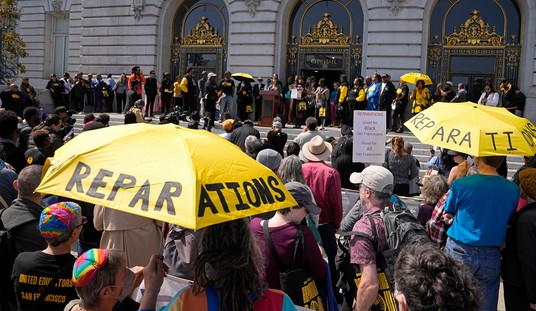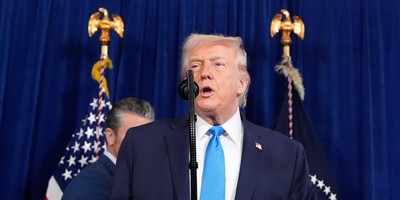Of the P5+1 Geneva agreement Mark Steyn, the nationally syndicated columnist cranked up his sharpest satire and said, "the participants came to the talks with different goals: the Americans and Europeans wanted an agreement; the Iranians wanted nukes. Each party got what it came for."
Criticism has been heaped on Kerry's rush to get "any deal" and pretend to the world that it was a "good deal." Benjamin Netanyahu – with more at stake than anyone, it seems – called it "a mistake of historic proportions."
But, bad as the deal is for legitimizing Iran as a member of the planet's nuclear club, virtually all of the concern and analysis of what the future may hold has failed to include the collaborations of a critical partner and ally of the Iranians – North Korea.
The following lead editorial from Investor's Business Daily explains in considerable detail the joint efforts of two members of the Axis-of-Evil to develop next generation intercontinental ballistic missile delivery systems far more capable than what either regime has today.
"Perhaps (Secretary of State) John Kerry believes that Iran only wants ballistic missiles for peaceful purposes," says Michael Rubin, former Pentagon official and AEI scholar and Middle-East expert, who is quoted within the following text.
"The fact of the matter is that Kerry and crew left both ballistic missiles and the nuclear warhead trigger experimentation at Parchin (military site) off the table" during talks in Geneva, he said. "It's the diplomatic equivalent of installing a burglar alarm system in your house but leaving the keys in the door."
Kerry's Geneva agreement, already compared by many to Neville Chamberlain's infamous Munich accord with Adolph Hitler in 1938, might be even worse than first believed. The following IBD editorial is reprinted in its entirety:
Recommended
Investor's Business DailyAs we shutter our ICBM squadrons and destroy our silos, Iran and North Korea are working on technology to deliver nukes Pyongyang already has and Tehran is a few centrifuge rotations from acquiring.
As Bill Gertz of the Washington Free Beacon reports, groups of technicians from the Shahid Hemmat Industrial Group (SHIG), a unit in charge of building Iran's liquid-fueled missiles, have made repeated trips to North Korea during the past several months, including as recently as late October, to work on a new 80-ton rocket booster being developed by the North Koreans,
That booster is believed to be the foundation for a new heavy-lift missile with intercontinental range and capable of carrying a large nuclear warhead. It would be far more capable than Pyongyang's Taepodong or Iran's Shahab missile series.
The booster was described by one official as a thruster for a "super ICBM" or a heavy-lift space launcher. "It is completely new from what they have done so far," he added.
The blog 38 North, part of the Johns Hopkins University School of Advanced International Studies, disclosed last month that satellite photos showed an expansion at a North Korean launch site for a larger rocket.
New commercial satellite imagery indicates that North Korea is moving ahead with major construction projects at its Sohae Satellite Launching Station at Tongchang-ri.
Iran has long worked with North Korea, particularly on intercontinental ballistic missiles. Its cooperation with North Korea began in the 1980s, when Tehran financed Pyongyang's production of Soviet-designed Scud missiles and received 100 of them. Later, North Korea shipped engines for Rodong midrange missiles to Iran.
Pyongyang has also helped Tehran set up missile production facilities, and North Koreans are regular visitors to these plants. Iran's Shahab-3, which can reach all of Israel, is simply the Islamic country's enhanced version of the North Korean Nodong.
Confirmed reports place Iranian scientists and engineers inside North Korea in 1993, when the Nodong-class missile was first tested and unveiled.
Iran is working hard to improve its missile capabilities. In February 2009, Iran demonstrated its global reach with the launching of its Omid satellite aboard the Safie space-launch vehicle.
The Japanese paper Sankei Shimbun reported North Korea sent missile experts to observe the launch. Iran's multistage Safir-Omid space launch vehicle owes much to North Korea's Taepodong missile.
In September 2012, Kim Yong Nam, a senior North Korean official, visited Tehran, and agreed with Iran's supreme leader Sayed Ali Khameni that the United States was their common enemy. When Iranian President Hassan Rouhani was sworn in this year, Kim was there to attend the ceremony.
"With sufficient foreign assistance, Iran could probably develop and test an intercontinental ballistic missile (ICBM) capable of reaching the United States by 2015," warned a 12-page Defense Department report, released in 2010, on the "Military Power of Iran," a copy of which Reuters obtained. North Korea is surely willing to provide that foreign assistance.
"Perhaps (Secretary of State) John Kerry believes that Iran only wants ballistic missiles for peaceful purposes," says former Pentagon adviser Michael Rubin.
"The fact of the matter is that Kerry and crew left both ballistic missiles and the nuclear warhead trigger experimentation at Parchin (military site) off the table" during talks in Geneva, he said. "It's the diplomatic equivalent of installing a burglar alarm system in your house but leaving the keys in the door."
It wasn't long after Neville Chamberlain's return from Munich in 1938 with a paper proclaiming "peace in our time" that German V-2 rockets began raining down on London. As the saying goes, those who refuse to learn from history are condemned to repeat it, this time with nukes.

























Join the conversation as a VIP Member